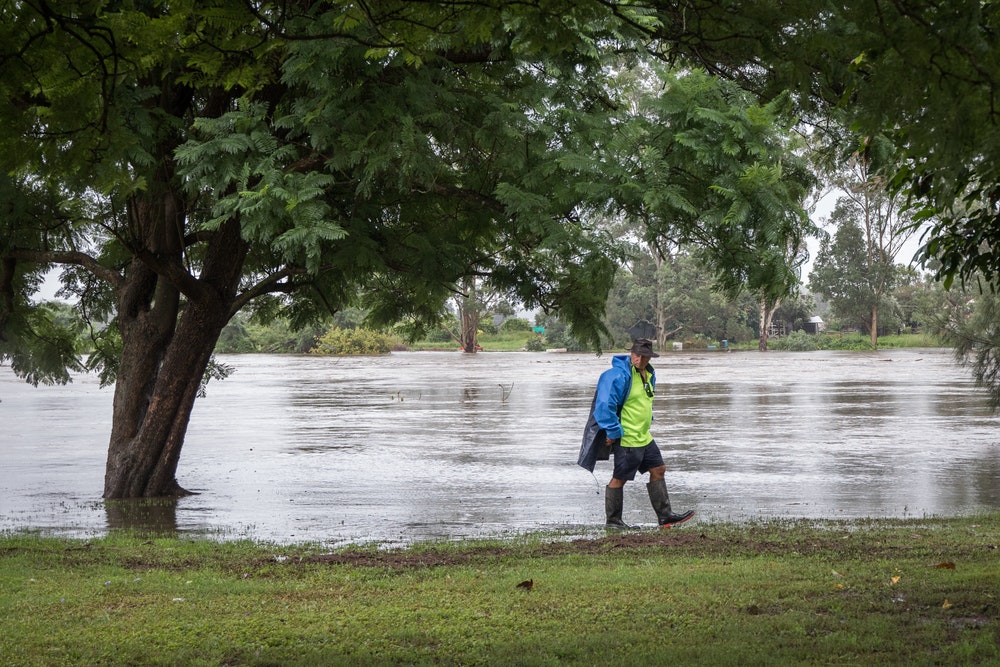What Are the Key Considerations When Developing Real Estate in UK Flood Plains?

As you navigate the diverse world of real estate development, certain regions present unique challenges. One such area is the flood plains of the United Kingdom. Many potential hazards need to be considered, such as the risk of flooding, water management requirements, and local planning laws. While the allure of these lands for developers is undeniable, it is crucial to understand what makes this landscape different. Keep reading to discover the key considerations when developing real estate in UK flood plains.
Understanding the Flood Risk
Before planning any development, understanding the flood risk of your chosen area is essential. The UK Environment Agency classifies land into flood zones based on the probability of flooding. These zones provide an initial screening tool for development proposals.
En parallèle : How to Design Communal Living Spaces That Foster a Sense of Community in Urban Developments?
Flood risk assessments (FRAs) are required for proposals in high-risk zones. These assessments should include the potential impact of climate change on flood levels, the effect of your development on local flood risk, and suitable mitigation measures.
Flooding can cause severe damage to property, disrupting lives and livelihoods. Therefore, considering the flood risk is not a mere planning formality. It is a fundamental aspect of ensuring that any new development is safe, resilient, and sustainable.
Avez-vous vu cela : How to Design Accessible and Inclusive Play Areas in Residential Real Estate Projects?
Furthermore, insurance companies heavily consider flood risk when determining policy premiums. High flood risk could make properties harder to insure and thus less attractive to potential buyers or renters.
Local Planning Laws and Regulations
When developing real estate in flood plains, complying with local planning laws and regulations is non-negotiable. Local planning authorities (LPAs) in the UK have the responsibility to regulate land development. The National Planning Policy Framework (NPPF) also provides guidance on development and flood risk, aiming to steer new developments to areas with the lowest probability of flooding.
The LPA will require a planning application for your development, which should detail how the proposed construction will manage flood risk and increase resilience. They may also ask for a flood risk assessment. These documents are crucial for obtaining planning permission.
The rules may vary between regions, so you should consult with your LPA as early as possible in your planning process. Engaging with your local community can be beneficial too, as they will provide valuable insight into the area’s flood history and potential challenges you might face.
Building Resilience into Your Development
The physical resilience of your development is a key factor in its long-term success. This involves incorporating flood-resistant and resilient measures into your construction plans.
Flood-resistant measures aim to prevent water from entering buildings, such as raising ground levels or installing flood doors and gates. On the other hand, resilient measures reduce the impact if water does enter the building. This could include installing waterproof wall finishes, moving electrical sockets higher up walls, or using water-resistant building materials.
A resilient development not only reduces the potential damage caused by flooding but also allows residents to return to their homes or businesses more quickly after a flood event.
Environmental Impact and Water Management
Developing real estate in flood plains can have significant impacts on local water environments. Your plans should consider how they will manage surface water and the potential impact on local flood risk.
Sustainable drainage systems (SuDS) are a popular method for managing surface water. They work by slowing and reducing the volume of runoff, reducing the risk of flooding and improving water quality. SuDS can include features like green roofs, permeable paving, and rain gardens.
It’s also essential to consider the impact on local wildlife and habitats. Flood plains are often rich in biodiversity, and any development should aim to protect and enhance these areas where possible.
The Role of Design and Innovation
Design and innovation can play a significant role in mitigating flood risk and improving the resilience of developments. Innovative designs can integrate flood-resilience measures in ways that are visually appealing, practical, and don’t compromise on living standards.
For instance, living spaces can be elevated above ground level, with garages or non-living spaces on the ground floor at a lower flood risk. Buildings can also be designed to float or elevate in response to rising water levels.
Innovation is not just about the buildings themselves, but also the surrounding landscape. The landscape can be designed to absorb, hold or slow down water effectively, reducing the risk of flooding and creating attractive green spaces for residents.
While developing real estate in UK flood plains brings a set of unique challenges, with careful planning and consideration, it’s possible to navigate these successfully, creating safe, resilient and desirable properties.
Assessing Climate Change and Sequential Test
In the context of real estate development in UK flood plains, climate change is a significant factor that cannot be overlooked. The potential implications of climate change on flood risk are substantial. According to the UK Environment Agency, climate change could increase the regularity and severity of flood events. Therefore, it’s vital to incorporate climate change into your risk assessment. This involves projecting future flood events under various climate change scenarios and identifying suitable adaptive measures.
Developers also need to conduct a Sequential Test, a planning mechanism designed to steer new developments to areas with the lowest probability of flood risk. This test involves checking the availability of other sites at a lower risk of flooding for the intended use. If there are no reasonably available sites, the developer can move to the next risk level. The Sequential Test demonstrates that the development can’t be located on sites with a lower probability of flooding, ensuring that new buildings are located in the safest areas.
Risk Management and Exception Test
Developing in flood plains involves significant risk management. After understanding the flood risk and planning laws, developers need to develop a comprehensive risk management strategy. This entails identifying potential flood risks, assessing their impact, and devising strategies to mitigate these risks.
In some circumstances, you may need to undertake an Exception Test. The Exception Test is required if, following the application of the Sequential Test, it’s not possible to locate the development in zones with a lower risk of flooding. It involves demonstrating that the development provides wider sustainability benefits to the community that outweigh the flood risk, and the development will be safe for its lifetime, without increasing flood risk elsewhere and where possible, reducing flood risk overall.
Conclusion
Real estate development in the UK flood plains presents a unique set of challenges. Understanding the flood risk, adhering to local planning laws, building flood resilience into your development, managing the environmental impact, and integrating design and innovation are all key considerations. In addition, assessing the potential effects of climate change, performing the Sequential Test, and managing the risk effectively are also essential steps.
Comprehensive planning and risk assessments are crucial, and it’s always beneficial to engage with local planning authorities and communities early on to gain valuable insights and ensure your development is compliant, resilient, and sustainable.
While the hurdles may seem daunting, with careful planning and a thorough understanding of the landscape, developers can successfully navigate these challenges. The result is a development that is not only safe and resilient but also desirable and sustainable, balancing the needs of the community, the environment, and the developer.
